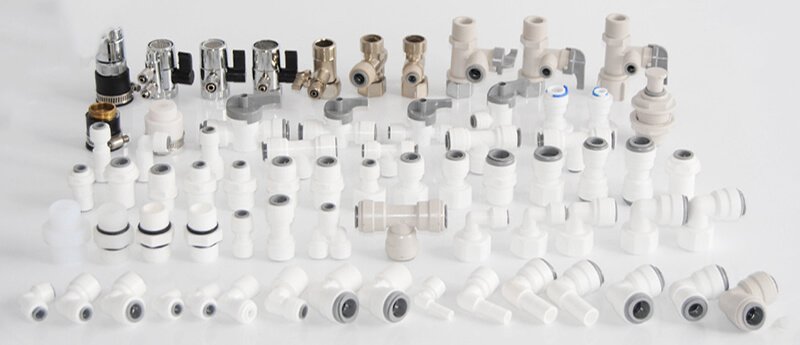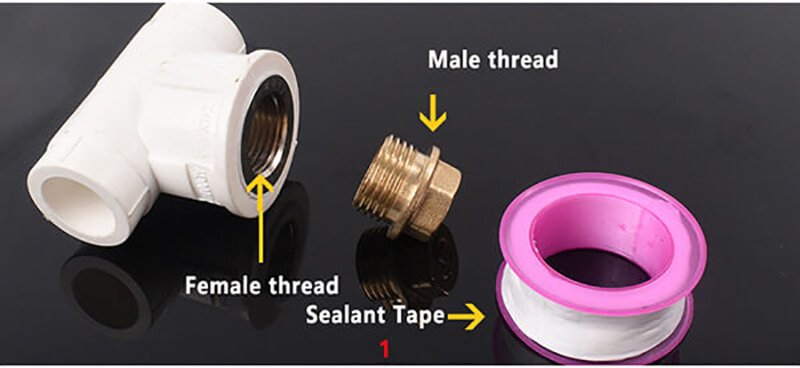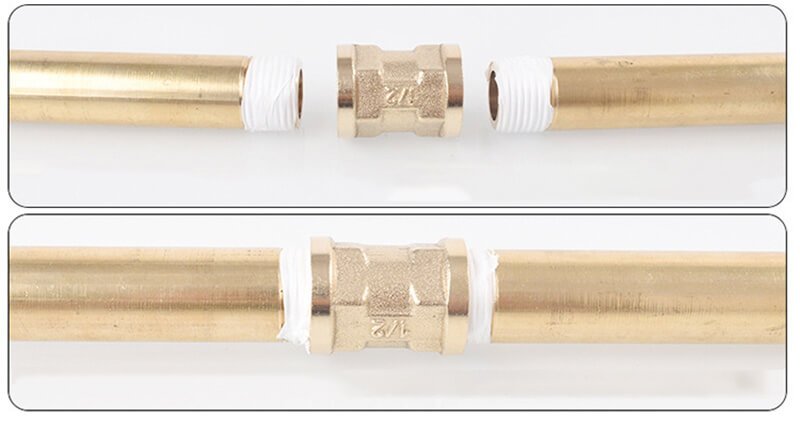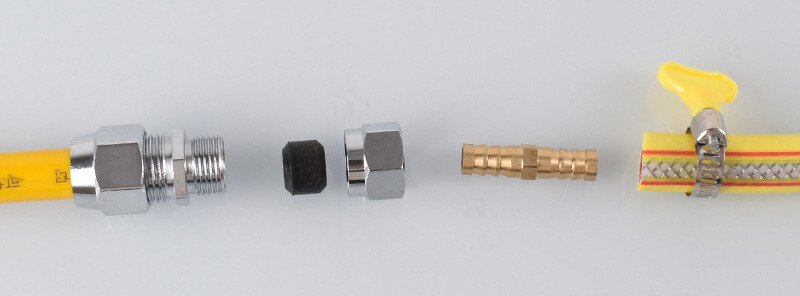Water purifiers play an essential role in ensuring clean and safe drinking water for homes and businesses alike. Water purifier connectors, the parts that link your filtration system to the water supply, are vital in keeping the system running efficiently. However, like any other mechanical components, they can wear out over time.
Maintaining and extending the life of these connectors is crucial to prevent costly repairs and ensure the smooth operation of your water filtration system. By following simple maintenance steps, you can prevent leaks, blockages, and other issues that could compromise the system’s performance.
This article will guide you through the importance of proper connector maintenance, the signs that indicate potential problems, and how to keep your system running at its best.
Understanding Water Purifier Connectors
Water purifier connectors are the pieces that join different parts of your water filtration system, allowing water to flow efficiently between them. These connectors ensure a tight seal to prevent leaks and help in maintaining the system’s pressure.
Types of Water Purifier Connectors
There are several types of connectors used in water filtration systems, and the most common include:
- Push-fit connectors: These are easy to install and remove. They are widely used for their convenience and flexibility in connecting pipes.
- Compression fittings: Known for their reliability, these connectors use a compression nut and ferrule to create a seal. They are durable and work well under higher pressure conditions.
- Quick-connect connectors: Often used in water filtration systems, these connectors allow for fast installation and removal, making maintenance much easier.
Each type of connector has its own benefits and considerations, but all serve the same essential purpose — to keep your filtration system working properly.

Signs That Your Water Purifier Connectors Need Attention
While water purifier connectors are designed to be durable, they can wear out or get damaged over time. Here are some common signs that indicate it’s time to check your connectors and perform maintenance:
3.1 Leaks or Drips Around Connectors
One of the most obvious signs that something is wrong with your connectors is water leakage. If you notice water pooling around the connectors, or if there are persistent drips, it means that there is an issue with the seal. This could be caused by worn-out O-rings, misaligned connectors, or loose fittings.
3.2 Reduced Water Flow or Pressure
If your water purifier’s performance has declined, such as reduced water flow or pressure, it could be due to blockages or air pockets in the connectors. Over time, mineral deposits or debris can build up, restricting the water flow. Regular maintenance and cleaning can help prevent this.
3.3 Corrosion, Discoloration, or Damage
Inspect your connectors regularly for any signs of corrosion, discoloration, or physical damage. Corrosion can be caused by exposure to hard water or chemicals, and it weakens the connectors, making them more prone to leaks. Cracks or bends in the connectors can also lead to system failure, so these should be replaced immediately to avoid further damage.
Routine Maintenance Tips
To keep your water purifier connectors in top shape and extend their lifespan, regular maintenance is essential. By adopting a few simple practices, you can prevent leaks, reduce wear and tear, and ensure your water filtration system continues to operate efficiently. Here are some effective maintenance tips:
1. Regular Inspection
Performing regular inspections is one of the most important steps in maintaining your connectors. Check them for any signs of leaks, cracks, or loose fittings. It’s best to do this inspection at least once every three to six months, or more frequently if your system experiences high water flow or pressure.
- Look for wet spots around connectors, which could indicate leaks.
- Check for looseness—tighten any loose connectors carefully.
- Inspect for visible damage, such as cracks or corrosion, and replace connectors if needed.
2. Cleaning the Connectors
Over time, connectors can accumulate mineral deposits, dirt, or debris that might obstruct water flow. Cleaning them regularly can help maintain a steady water flow and prevent blockages.
- Use a soft cloth or a brush to gently clean the connectors and surrounding areas.
- Avoid harsh chemicals that could damage the connectors; instead, use mild soap and water for cleaning.
- Rinse thoroughly to ensure no soap or cleaning residue is left behind, as it could affect the water quality.
3. Lubricating the Connectors (If Applicable)
Some connectors, such as push-fit types, may benefit from occasional lubrication to maintain a smooth, leak-free seal. Lubricating the connectors helps prevent seizing or sticking that could occur over time due to mineral build-up.
- Use a food-safe silicone lubricant to coat the O-rings and seals lightly.
- Be sure to avoid over-lubricating, as too much lubricant can attract dust and dirt.
4. Checking O-Rings and Seals
O-rings and seals are critical to maintaining a tight seal around connectors. These small parts are prone to wear and tear over time, especially if exposed to high water pressure or temperature fluctuations. Regularly checking and replacing damaged seals can prevent leaks and prolong the life of your connectors.
- Inspect O-rings for cracks or deformation.
- Replace any damaged seals immediately to avoid water leakage.
By following these simple maintenance tips, you can ensure that your water purifier connectors remain in excellent condition, helping to keep your entire filtration system working smoothly and efficiently.

Best Practices for Installation and Usage
Proper installation and usage of your water purifier connectors can prevent future problems and extend their lifespan. Follow these best practices to ensure a smooth and efficient setup:
1. Proper Installation
The first step to a successful water purifier system is correct installation. Ensuring that your connectors are properly installed will help avoid leaks, misalignments, and other issues.
- Follow the manufacturer’s guidelines when installing the connectors. This will ensure that you are using the correct fittings and tools for the job.
- Make sure connectors are tightly fitted, but avoid over-tightening, which can damage the threads or cause stress on the connector material.
- Use compatible connectors: Ensure that the connectors you are using are designed for your specific water filtration system. Compatibility is key to prevent leaks and inefficiency.
2. Proper Handling During Usage
After installation, how you use the connectors also plays a crucial role in their longevity. Ensure that your system operates within the recommended pressure and temperature limits.
- Avoid subjecting connectors to excessive water pressure. High pressure can cause connectors to wear out quickly, leading to leaks or failure.
- Check for any water flow issues periodically to make sure the system is functioning properly, and adjust settings if necessary.
Preventing Common Issues
By taking proactive steps, you can avoid many common issues that could affect the performance of your water purifier connectors and filtration system.
1. Preventing Leaks
Leaks are one of the most common problems in water purifier systems. To prevent leaks:
- Ensure that connectors are correctly aligned and tightened.
- Inspect seals and O-rings regularly, replacing any damaged parts immediately.
- Use thread sealant tape for threaded connections to prevent leaks around the threads.
2. Avoiding Corrosion
Corrosion can weaken connectors, leading to failure over time. To avoid corrosion:
- Inspect connectors regularly for signs of corrosion. If you notice any, replace them as soon as possible.
- Use corrosion-resistant materials, such as stainless steel connectors, to reduce the risk of rust.
- Maintain proper water quality: Hard water can cause mineral build-up and increase the chances of corrosion. Consider using a water softener if your water has a high mineral content.
3. Preventing Pressure Damage
Excessive water pressure can damage connectors, leading to leaks or reduced performance. To prevent pressure-related issues:
- Install a pressure regulator to keep water pressure within safe limits for your connectors.
- Check water pressure regularly to ensure it remains at optimal levels for your system.

Replacing and Upgrading Connectors
Even with the best care, connectors will eventually wear out or need to be replaced. Here’s how to know when it’s time to replace them and how to upgrade for better performance:
1. When to Replace Connectors
If your connectors show signs of damage such as cracks, corrosion, or wear, they should be replaced immediately. Additionally, if your water purifier system is no longer performing as efficiently as it once did, it may be due to worn-out connectors.
- Look for visible damage such as cracks or holes.
- Check for leaks that cannot be fixed with tightening or seal replacement.
- Replace O-rings and seals periodically to ensure a proper fit and prevent leaks.
2. Upgrading Connectors
If you’re looking to improve your water filtration system, upgrading to higher-quality connectors could be a good option.
- Choose connectors made from more durable materials like brass or stainless steel for enhanced longevity.
- Consider upgrading to more efficient connector designs, such as quick-connect or push-fit connectors, for easier installation and maintenance.
- Ensure compatibility with your current system and check for any improvements in flow or pressure performance after the upgrade.
Conclusion
In conclusion, maintaining your water purifier connectors is essential for ensuring the long-term efficiency and reliability of your filtration system. By following regular inspection, cleaning, and maintenance practices, you can prevent common issues such as leaks, corrosion, and pressure damage. Additionally, adhering to proper installation and usage guidelines will help avoid premature wear and tear.


